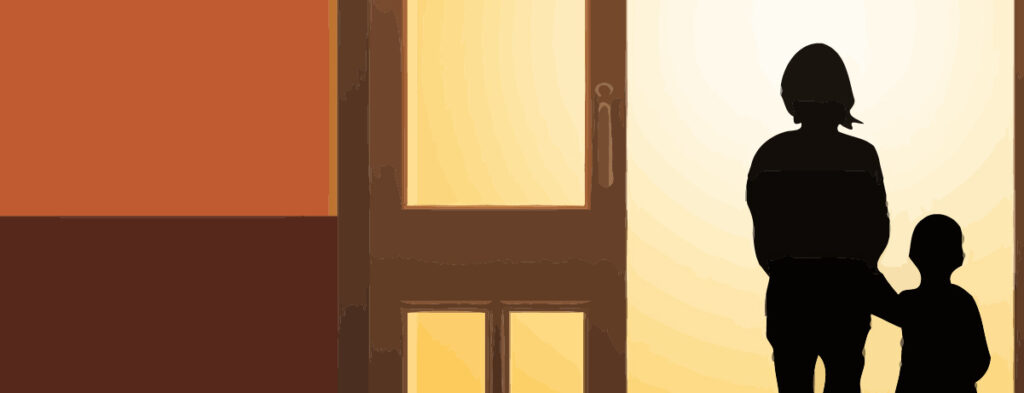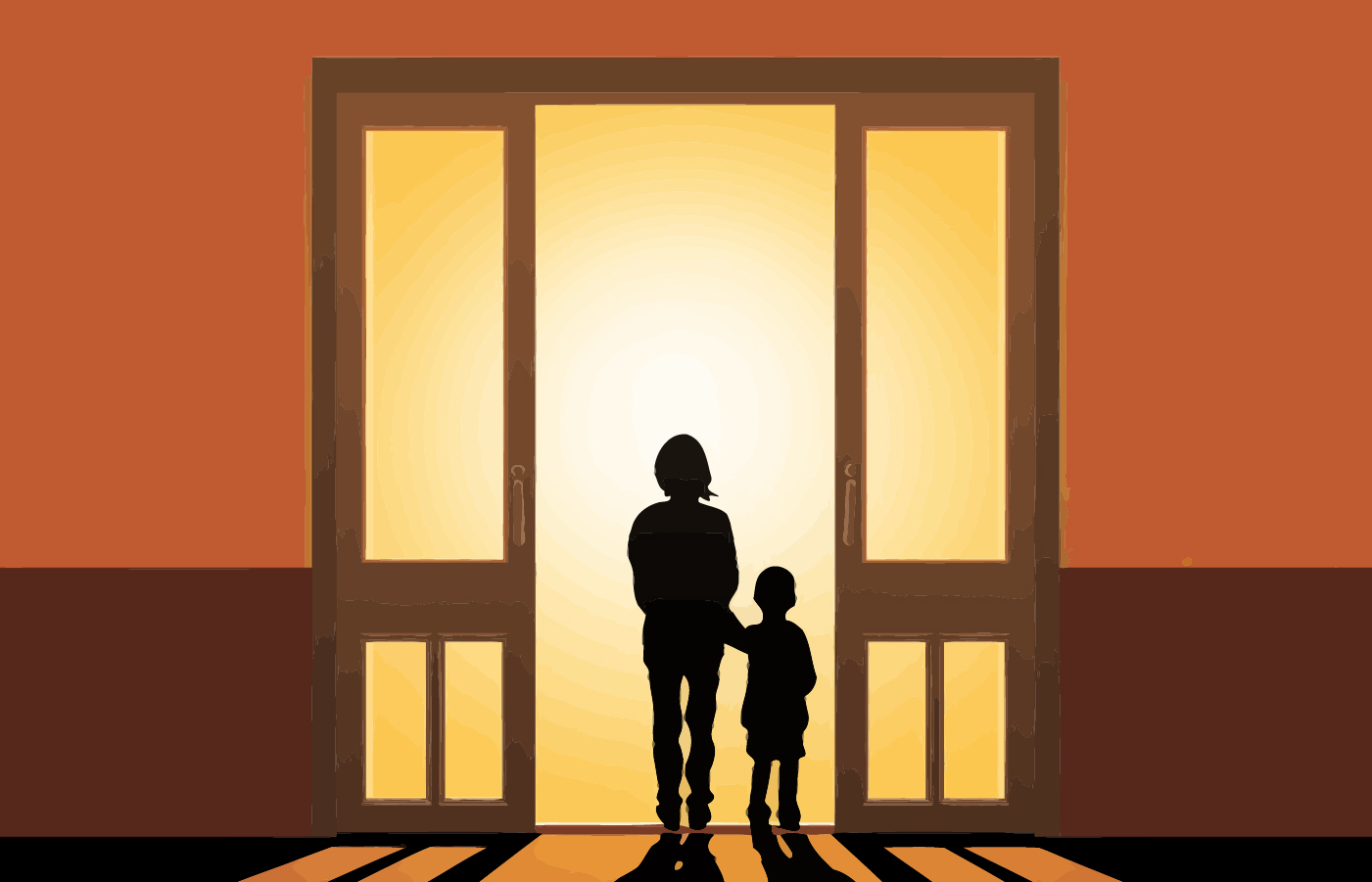In a dialogue on the cultural perspectives of children and childhood, I approached a Chinese language translator for the term ‘children-at-risk.’ She replied, ‘Eer… the term is 有危险的儿童 [which means, “children who are in danger or risk situations”]; but I don’t think it aptly translates the urgency. A more appropriate term would be, “children outside the door” (门外的孩子).’ In her context, the term, ‘children outside the door’ refers to minors aged 16 years and below who are without family protection, left to fend for themselves, and open to risk situations.
In her context, the term, ‘children outside the door’ refers to minors aged 16 years and below who are without family protection, left to fend for themselves, and open to risk situations.
In a traditional Chinese culture, the family unit is highly valued, and all children are born ‘inside the door,’ into a household. The household (or clan) is where a child belongs. This belonging gives the child a name, an identity, and a role and purpose in community life.[1] The adults are responsible for protecting and nurturing the child. If for some reason a child is not wanted or acknowledged by the household, this child will be placed ‘outside the door.’
Outside the Door in Different Cultures
Not all ‘children outside the door’ are deliberately abandoned. Some children could be orphans. UNICEF estimates that globally, there are 153 million orphans, with the highest number of orphans being in Sub-Saharan Africa and South Asia.[2] Children ‘outside the door’ could also mean displaced minors, or child refugees traveling alone due to forced migration and war. In 2019, the UN Children’s Fund reported that there are 12 million children in this category; traveling alone and later repatriated as asylum seekers.[3] While the main contributing factor to children ‘outside the door’ seems to be parental or household neglect, there are children who have deliberately chosen to stay outside the door. These children prefer to live on the streets, perhaps away from a dysfunctional family structure, domestic violence, or physical, emotional, or sexual abuse. Being ‘outside the door’ is a personal decision to safeguard themselves from domestic harm and to protect their mental well-being.
In an East Asian country, the phenomenon of ‘children outside the door’ surged under the One-child Policy enforcement. Children with special needs or born female were often abandoned in preference for healthy, male off-springs. In the Philippines, ‘children outside the door’ constitute the batang kalye (street kids). There are an estimated 250,000 homeless children in Manila alone; the figure is as high as 1 million nationwide.[4] In India, there are an estimated 29.6 million Lawaaris bache, literally unclaimed children.[5] In Egypt, the ‘children outside the door’ are the atfal bala ma’wa (children without a home). They are usually orphans or are forced into street living because of abandonment, deteriorating home conditions, or extreme poverty. In Latin America, ‘children outside the door’ are the chicos /chicas de la calle. They are the children of the street, a term given to minors ‘living in urban areas and who call the street their principal home.’[6]

Outside the Door during the COVID-19 Pandemic
During the COVID-19 pandemic in 2020, the cliche of ‘stay home and keep safe’ mocks the ‘children outside the door.’ They have no home to stay safe in, let alone talk about social distancing, wearing a face mask, washing hands, or sanitizing. The irony is that they are all at home – on the streets.
Al Jazeera reported that in Indonesia, most shelters or drop-in centers were closed during the lockdown and those that were open were overcrowded.[7] In Senegal, the UNODC worked alongside local authorities to locate the families or next-of-kin for family reunification of the children on the streets.[8] When family or kinship homes were not available, these children were placed in transit shelters or ‘alternative homes.’ In Egypt, physical violence and abuse of vulnerable homeless children decreased due to mandatory social distancing and public fear of contracting the Covid-19 virus.[9] Hunger and starvation posed a more significant threat to ‘children outside the door’ during the pandemic than the virus did. However, there were ‘positive’ reports of how the Covid-19 pandemic has helped to turn situations around for some children. The enforced mandatory social distancing to ‘flatten the curve’ disrupted child exploitation activities. The enforced lockdown in several countries reduced child labour, human trafficking, and child-sex tourism.[10]
From Outside to Inside the Door
For their daily meals, most of them steal, beg, rummage in garbage bins for throw-aways, depend on the food kitchens, or buy food with whatever little money they have. For physical safety, they cluster in street family groups, watched over by the big brothers or street warlords.
While the ‘children outside the door’ may be scattered in different regions worldwide, they all face similar physical, social, emotional, and developmental challenges. For their daily meals, most of them steal, beg, rummage in garbage bins for throw-aways, depend on the food kitchens, or buy food with whatever little money they have. For physical safety, they cluster in street family groups, watched over by the big brothers or street warlords. ‘Children outside the door’ often suffer from malnutrition and skin diseases. Socially, they are looked down on, bullied, and ostracized.[11] Psychologically, these children face uncertainties, are often afraid, and struggle with feelings of being unwanted and unworthy. However, most ‘children outside the door’ are also street-smart and have found ways to cope and ‘manage’ their lives on the streets.
The call for ‘children outside the door’ to be placed in families is in their best interest to ensure a safe and nurturing space for them and to experience the normalcy of healthy child development and relationships. ‘The right to family life (for children) is enshrined in the national, international, and regional human rights law.’[12] A supportive family environment is the first place that children learn to love and be loved. Family life is also where they learn social values and deal with relational dynamics in a safe and protective space. The qualities of healthy family life for children contribute to healthy adult behavior. This, in turn, will significantly impact society at large.
Being placed in a home with nurturing family environment allows children to experience positive behavior patterns, observe ways to make wise decisions, and imitate appropriate adult modelling. A home also gives children individuality, which is essential for mental health and social belonging. Hence, one practical approach to addressing the issue of ‘children outside the door’ is to support and strengthen the family unit.[13] The process can include family-life education, an emphasis on good nutrition, making health services available, and helping families be financially self-sufficient. Institutional care can be an alternative when a child is without parents and where kinship, foster, or adoptive homes are not available. Institutional or residential care designed with a family structure concept can invoke relational dynamics similar to natural family life.[14] One concern of institutional care is that children who grow up in long-term institutional care are at risk of physical, emotional, and social harm (UNICEF 2020).[15]
‘Children outside the door,’ include orphans, displaced minors, child refugees traveling alone, street children without homes, and abandoned children. While this Chinese idiom is context and culture-specific, the phenomenon is global. As cultural and socio-political trends redefine the family unit, a supportive family whether kinship, foster, or adoptive, is essential for childhood holistic development and wellness. This approach can be an answer to unfavourable long-term institutional care. May we reflect God’s heart for children as we advocate for ‘children outside the door’ to be brought inside and be family.
Editor’s Note: This article is an abridged version of: Tan, Petallar and Hefford. 2022. God’s Heart for Children: Practical Theology from Global Perspectives. UK: Langham Pub.
Endnotes
- Woodhead, M. & L. Brooker. “A sense of belonging.” Early Childhood Matters, 2020. Bernard van Leer Foundation: Netherlands. See https://www.familiesforlife. sg/discover-an-article/Pages/The-Importance-of-Family-acceptance.aspx#sthash. mPXdXytJ.dpuf.
- SOS Children’s Villages. Children’ statistic: UN data on the plight of children. https://www.sos-usa.org/our-impact/focus-areas/advocacy-movement-building/childrens-statistics.
- CWAPC. “Children without appropriate parental care.” Child Rights Connect, March 20, 2019. https://www.childrightsconnect.org/working_groups/children-without-parental-care/.
- The Borgen Project. The State of Homelessness in the Philippines. 2 July 2020. https://borgenproject.org/homelessness-in-the-philippines/#:~:text= Homeless%20children%20are%20among%20the,parents%2C%20poverty%20or%20sexual%20exploitation.
- United Nations Children’s Funds. Children in alternative care, September 3, 2020. https://www.unicef.org/protection/children-in-alternative-care.
- O’Haire, Hilary. “Living on the Streets: The Street Children of Brazil.” Inquiries Journal. 2011. Vol.3 NO. 04. http://www.inquiriesjournal.com/articles/506/living-on-the-streets-the-street-children-of-brazil.
- Washington, Jessica. “For Indonesia’s street children, coronavirus means more danger.” Al Jazeera, June 7, 2020. https://www.aljazeera.com/news/2020/07/24/for-indonesias-street-children-coronavirus-means-more-danger/.
- United Nations Office on Drugs and Crimes. UNODC supports Senegal to get street children home during the COVID-19 Pandemic, June 2020. https://www.unodc.org/unodc/en/frontpage /2020/June/unodc-and-partners-support-senegal-to-get-street-children-home-during-the-covid-19-pandemic.html.
- The Arab Weekly. “Egypt’s street children face poverty, pandemic.” AW, 15 July 2020. https://thearabweekly.com /egypt-street-children-face-poverty-pandemic.
- United Nations Office on Drugs and Crimes. Impact of Covid-19 Pandemic on trafficking in persons: Preliminary findings and messaging based on rapid stocktaking. https://www.unodc.org/ documents/Advocacy-Section/HTMSS_Thematic_ Brief_on_COVID-19.pdf.
- O’Haire.
- CWAPC.
- Better Care Network. Strengthening Family Care. 2019. https://bettercarenetwork.org/library/the-continuum-of-care.
- World Without Orphans. “Transitioning to family care for children.” Resources, 2015-2020. https://www.worldwithoutorphans.org/resources.
- UNICEF.

